Physical Address
304 North Cardinal St.
Dorchester Center, MA 02124
Physical Address
304 North Cardinal St.
Dorchester Center, MA 02124
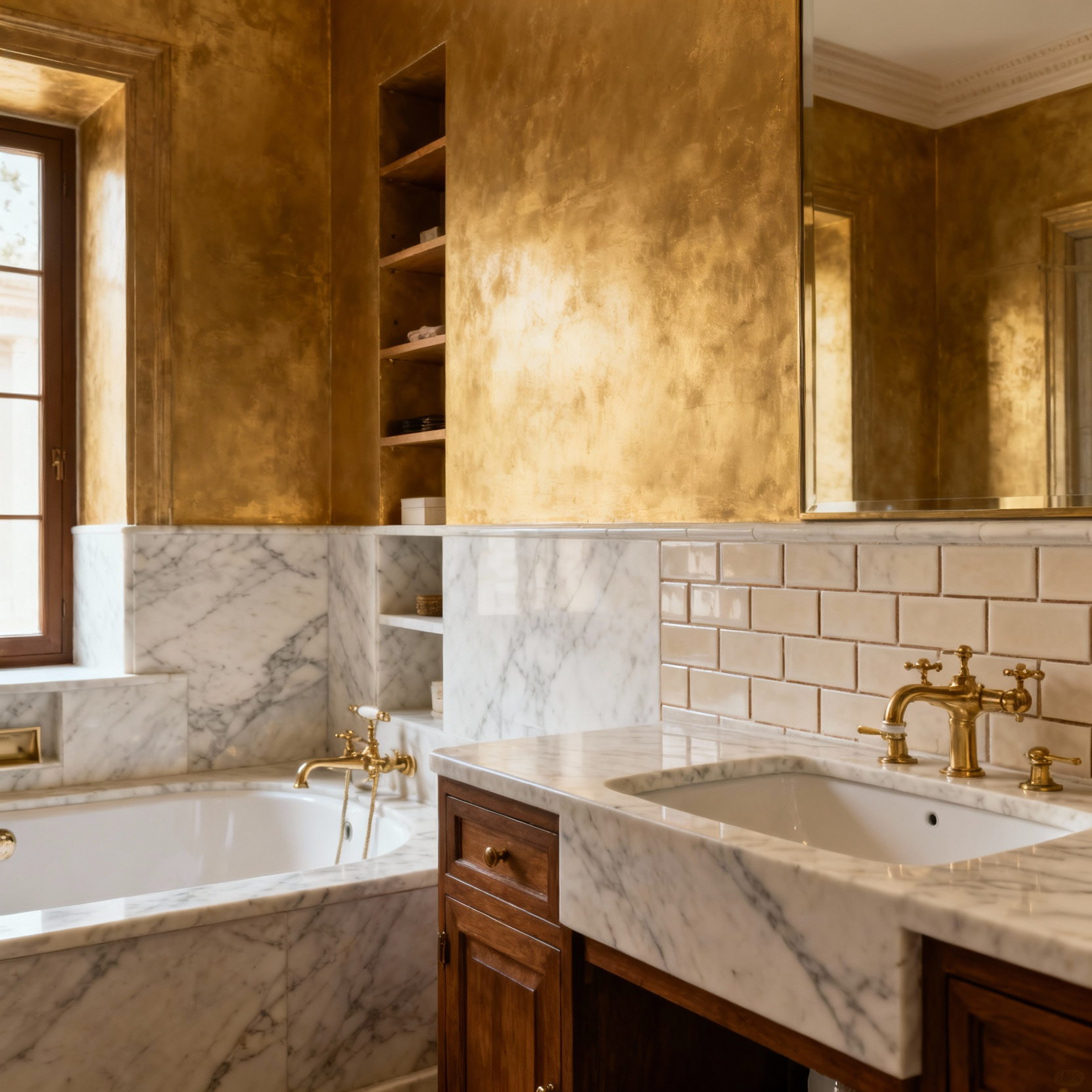
Discover 20 principles for creating a bathroom design classic. Rachel Blackwood shares expert tips on balancing historical elegance with modern functionality.
We need to have an honest conversation about bathrooms. Somewhere along the way, between the rise of “fast fashion” interiors and the endless scroll of Pinterest, we lost the plot. The bathroom used to be a dedicated sanctuary—a place of ritual, built with materials meant to outlast the house itself. Now? It’s often a graveyard of trendy tiles and particle board vanities that start peeling after three years of humidity.
If you are looking to create a bathroom design classic, you aren’t looking for what’s hot right now. You’re looking for what has always worked. In my work as a historical renovation consultant, I see this every day: the difference between a renovation that feels “dated” in five years and one that feels “timeless” in fifty comes down to discipline. It’s about understanding why we build the way we do. We need to stop treating these spaces like temporary exhibits and start treating them like part of the home’s permanent architecture. The twenty principles below are the separation between a quick flip and a legacy renovation.
You can’t break the rules effectively until you understand why they exist. To build a bathroom that feels right—not just looks right, but feels right—we have to go back to the architectural bones. This isn’t about memorizing dates; it’s about understanding the math and philosophy that make a space livable.
The Roman architect Vitruvius gave us the triad of good architecture: Firmitas (strength), Utilitas (function), and Venustas (beauty). If you ignore one, the whole thing collapses. In a bathroom, Firmitas means waterproofing that doesn’t fail and subfloors that don’t rot. Utilitas is realizing that a pedestal sink is useless if you have nowhere to put your toothbrush. And Venustas? That’s the soul of the room.

In my professional experience, I often see homeowners obsess over the “Delight” part—the pretty tile, the brass taps—while ignoring the “Firmness.” I once walked into a beautifully tiled Victorian renovation where the floor was spongy because they skipped the proper substrate. A classic bathroom starts with the boring stuff: waterproofing, robust framing, and materials that can handle a century of steam. If it doesn’t work and it doesn’t last, it isn’t beautiful. It’s just a stage set.
Authenticity isn’t about turning your bathroom into a museum exhibit where you’re afraid to touch anything. It’s about respect. It’s looking at the era of your home—whether it’s an 1890s Brownstone or a 1920s Bungalow—and speaking that language. You don’t have to use a toilet from 1910, but the spirit of the design should align. It means avoiding the temptation to force a sleek, ultra-modern spa aesthetic into a farmhouse that calls for beadboard and warmth.

When I’m sourcing for a project, I always tell clients: buy the real thing or the highest quality reproduction, but never the cheap imitation. A mass-produced “vintage look” vanity made of MDF will never fool anyone, and it certainly won’t age well. A real cast-iron tub or a sink made of heavy fireclay has a presence—a literal weight—that grounds the room. You want materials that have a lineage, pieces that look like they’ve always been there, even if they were installed last Tuesday.
This sounds intimidating, but it’s actually just about what feels natural to the human eye. The Golden Ratio (roughly 1.618) creates a sense of calm. When a room feels “off,” it’s usually because the proportions are fighting each other—the wainscoting is too high, or the mirror is too small for the vanity. Historically, builders used these ratios instinctively.
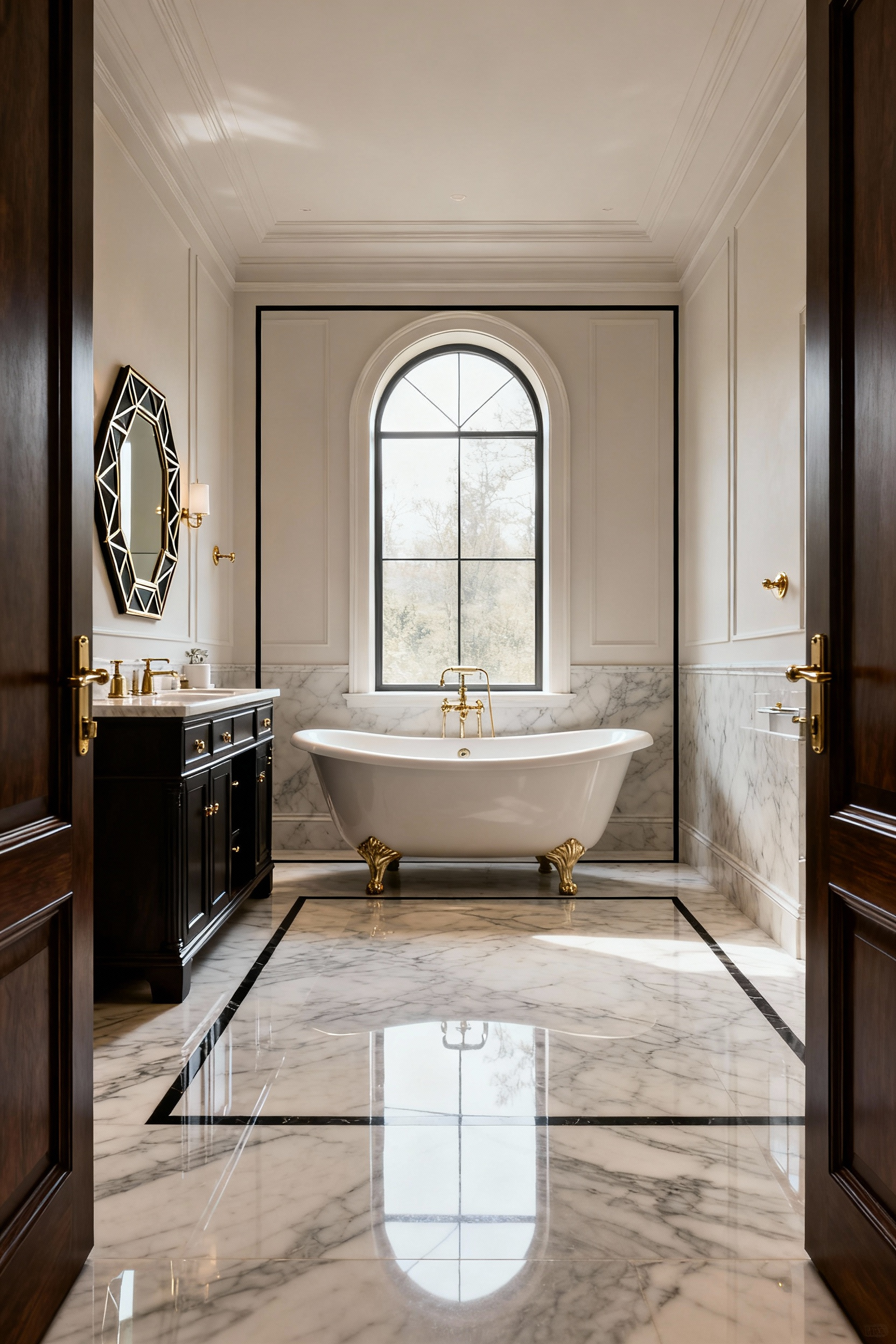
Practical application is easier than you think. If you’re tiling a wall, don’t just stop at an arbitrary height. Look at the Golden Section. If you’re hanging a sconce next to a mirror, the distance matters. I’ve found that when we adjust a layout even by an inch to align with these classical proportions, the client instantly relaxes in the space. They can’t tell you why it looks better, they just know it does. That invisible sense of “rightness” is the hallmark of a classic.
Color is wonderful, but in a permanent fixture like a bathroom, restraint is your best friend. A truly timeless bathroom design classic usually relies on a foundational palette of neutrals—whites, creams, soft greys, and natural wood tones. This doesn’t mean boring. It means you’re creating a quiet backdrop that allows the textures and materials to sing.

Think of the room in layers. Your base layer (tiles, tub, toilet) should be the quietest. Then you layer in depth with tonal variations—perhaps a honed Carrara marble floor that has greys and whites, paired with unlacquered brass hardware that adds warmth. If you want punchy color, do it with towels, art, or paint on the upper walls—things you can change in a weekend without a jackhammer. I’ve saved so many clients from tiling their entire shower in “Trend of the Year” blue, ensuring they won’t hate their bathroom in 2030.
Here is where the rubber meets the road. You can have a perfect layout, but if you cover it in plastic and faux-finishes, you’ve lost the game. We are looking for materials that are “noble”—meaning they are natural, honest, and get better with age.
We live in a disposable culture, but your bathroom shouldn’t participate in it. Heirloom quality means choosing items that can be repaired rather than replaced. It’s the difference between a faucet with plastic internal cartridges and one with solid brass valves. One goes in a landfill in five years; the other lasts fifty.
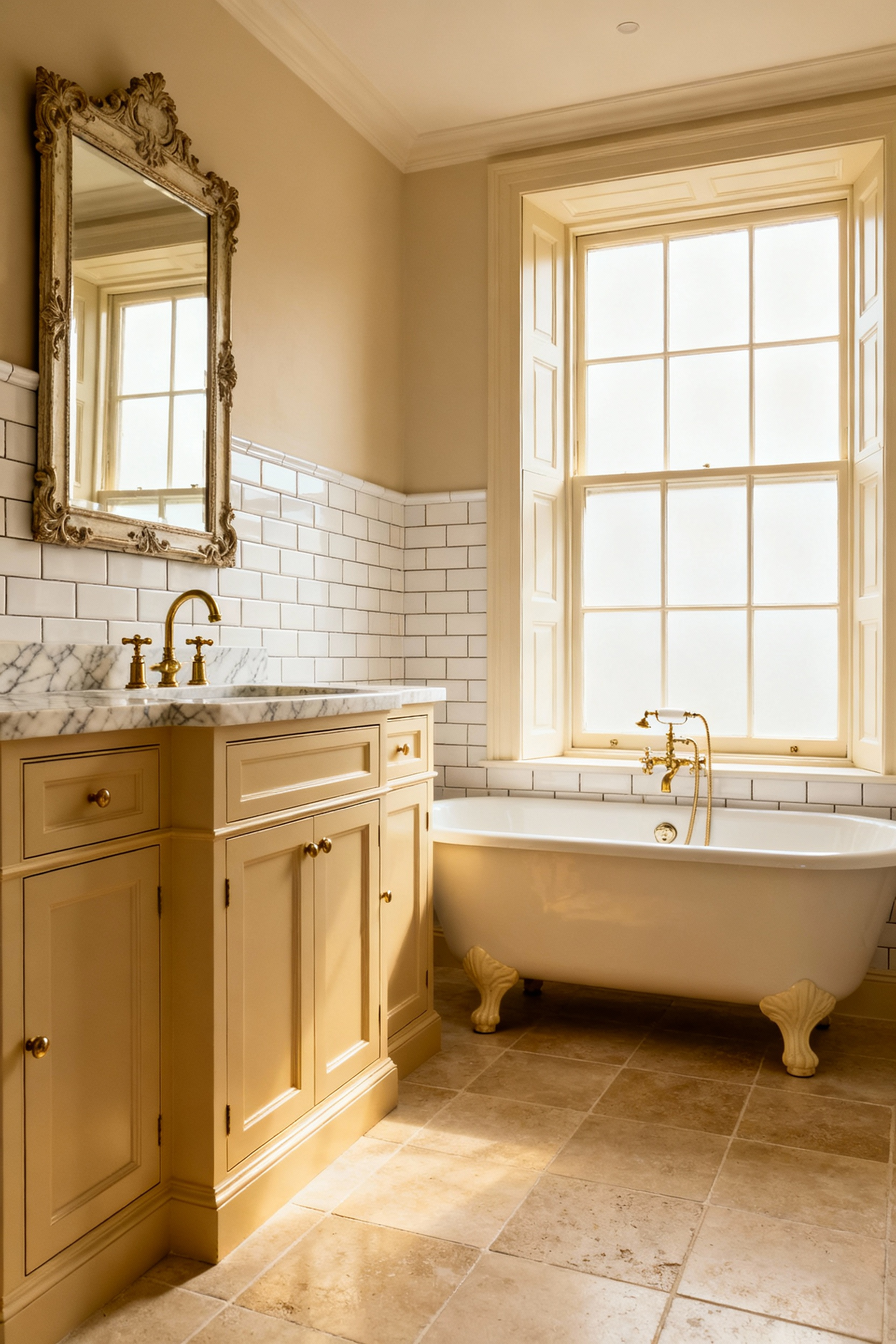
From my work in period restoration, I can tell you that the most sustainable choice is the one you only make once. Solid wood vanities, cast iron tubs, heavy brass hardware—these things are investments. They cost more upfront, no question. But I’ve seen 100-year-old sinks that just need a good scrub to look new, while a five-year-old laminate counter is peeling at the edges. Value is measured in decades, not days.
There is simply no substitute for natural stone. Porcelain tiles that look like marble are getting better, but they lack the thermal mass and the depth of the real thing. Real stone tells a story. It has imperfections, veins, and variations that make it unique. A slab of Calcutta or Statuario marble is like a piece of art; no two are alike.
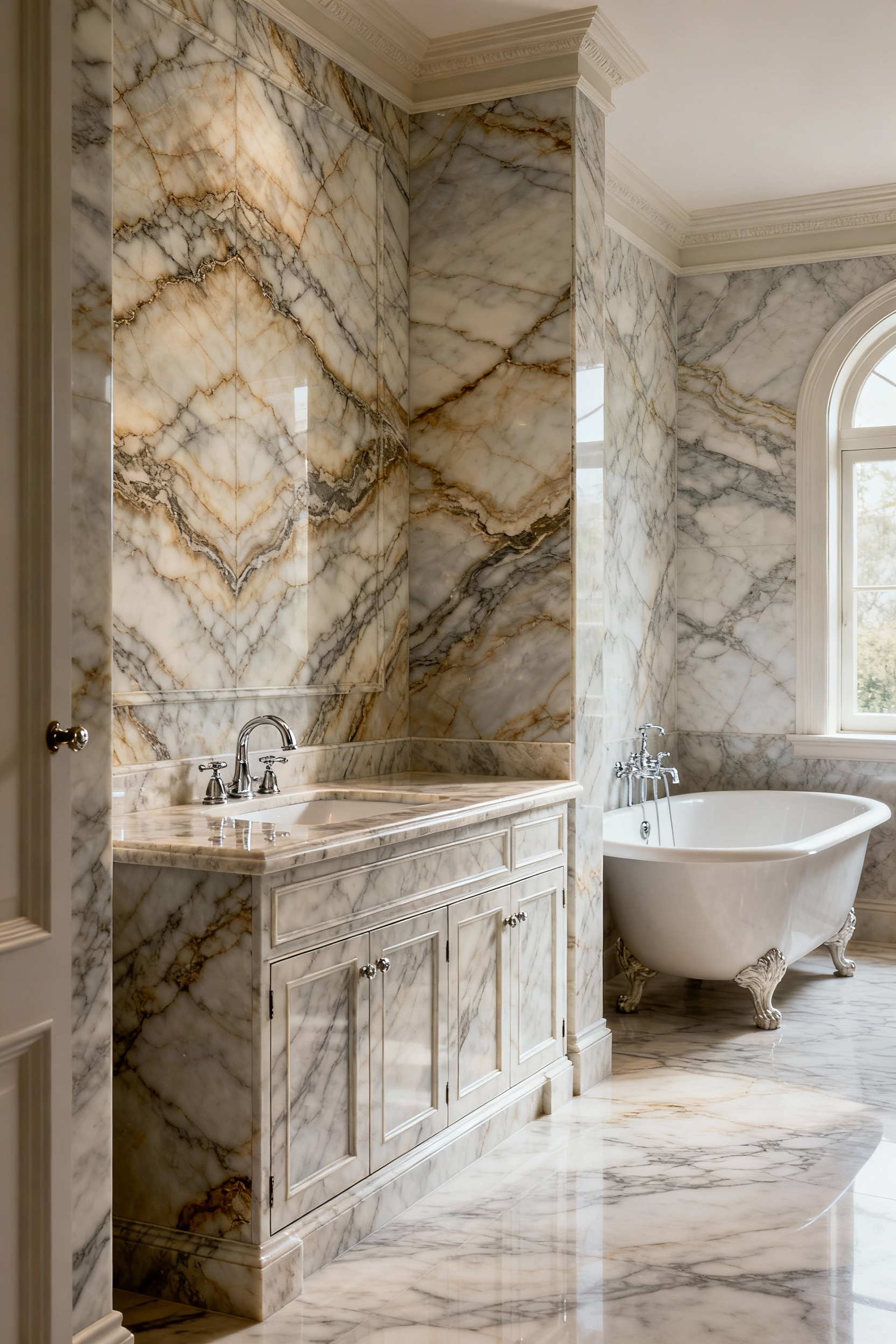
However, you have to accept that stone is alive. It will etch if you spill lemon juice on it. It might darken where water hits it often. This is where I have to have a “come to Jesus” talk with my perfectionist clients. If you want a surface that looks plastic-perfect forever, buy plastic. If you want a bathroom design classic, you embrace the stone’s nature. That etching isn’t damage; it’s patina. It’s evidence of life.
Speaking of patina—let’s talk about metal. Chrome is fine, and nickel is lovely, but unlacquered brass and living bronze are the secret weapons of historical charm. These finishes don’t have a synthetic coating. They interact with the air and the oils in your hand to darken and change color over time.

I remember a project where the client was terrified of unlacquered brass, thinking it would look “dirty.” I convinced her to try it on the bridge faucet. Six months later, she told me it was her favorite thing in the house. It had developed this warm, honey-colored luster that felt incredibly cozy. It takes the “newness” edge off a renovation and makes the room feel settled, like it’s always been there.
Machine-made tile is perfectly flat, perfectly square, and perfectly soulless. Hand-glazed or handmade tiles, on the other hand, reflect light in different directions. They have undulations and slight color variations that create a “watery” look on a wall. Whether it’s a classic subway tile with a handmade edge or a Moroccan Zellige, these imperfections catch the eye.
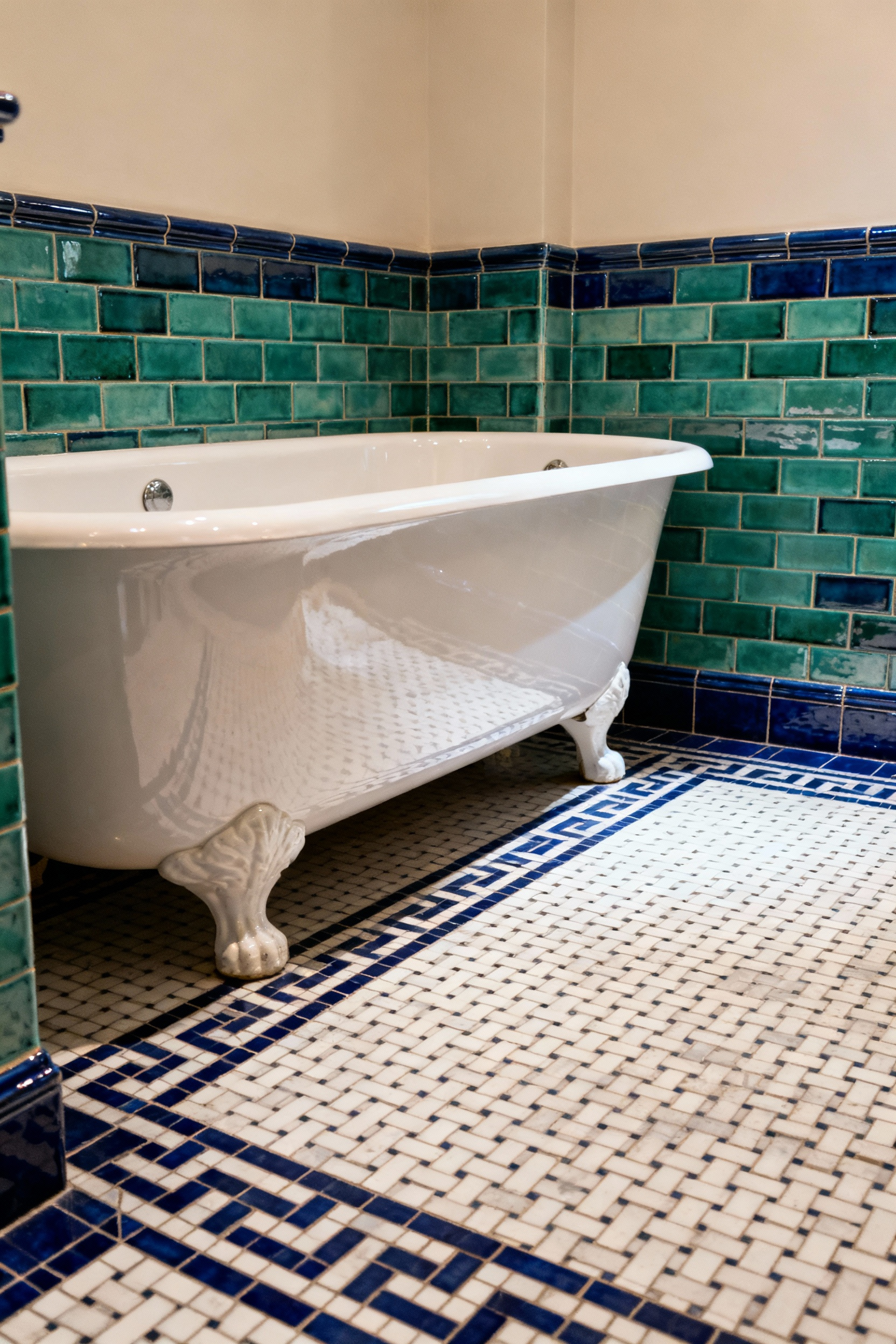
When applying this, I love to use a simple pattern—like a running bond or herringbone—but let the tile itself provide the drama. You don’t need a crazy mosaic if the tile itself is beautiful. The play of light across an irregular surface creates texture without clutter. It’s quiet luxury at its finest.
If there is one place to splurge, it’s the millwork. A custom vanity that fits the space perfectly, constructed with dovetail drawers and solid wood face frames, elevates the entire room. It stops the bathroom from looking like a sterile laboratory and brings in the warmth of furniture.
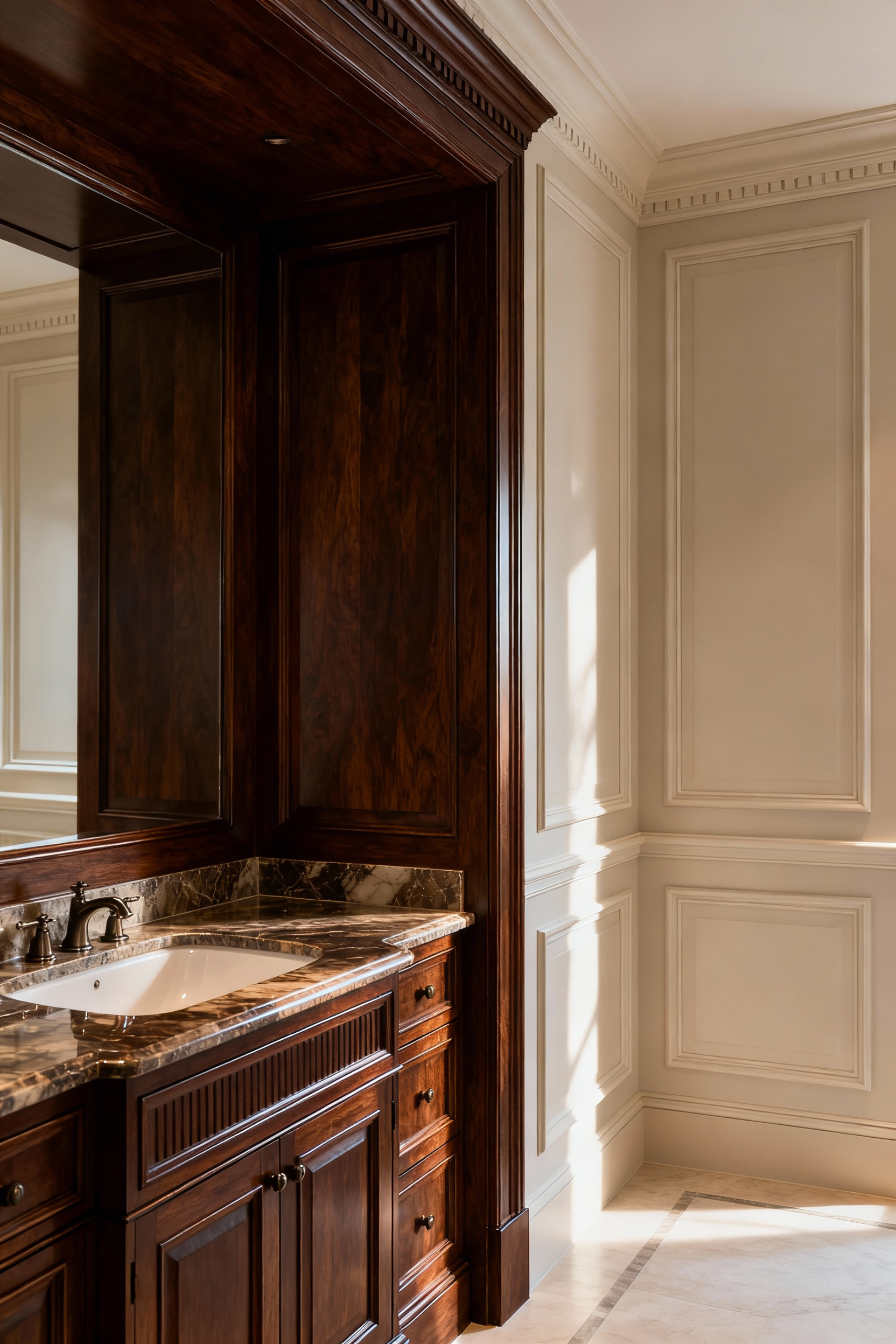
In older homes, I often look at the original built-ins in the dining or living rooms and try to replicate those details in the bathroom cabinetry. Maybe it’s a specific foot detail or a type of panel molding. This connects the bathroom to the rest of the house’s architecture. It stops feeling like a separate, utilitarian box and starts feeling like a continuation of the home’s narrative.
Now that we have our materials, we need to arrange them. This is about viewing the bathroom as a piece of architecture, not just a utility closet with a drain.
Light needs to be managed. Clear glass is fine, but it can feel a bit exposed and modern. Beveled glass adds a prismatic sparkle that feels very 1920s, while reeded (fluted) glass offers privacy and a lovely, diffused glow. It blurs the lines of what’s behind it, softening the room.
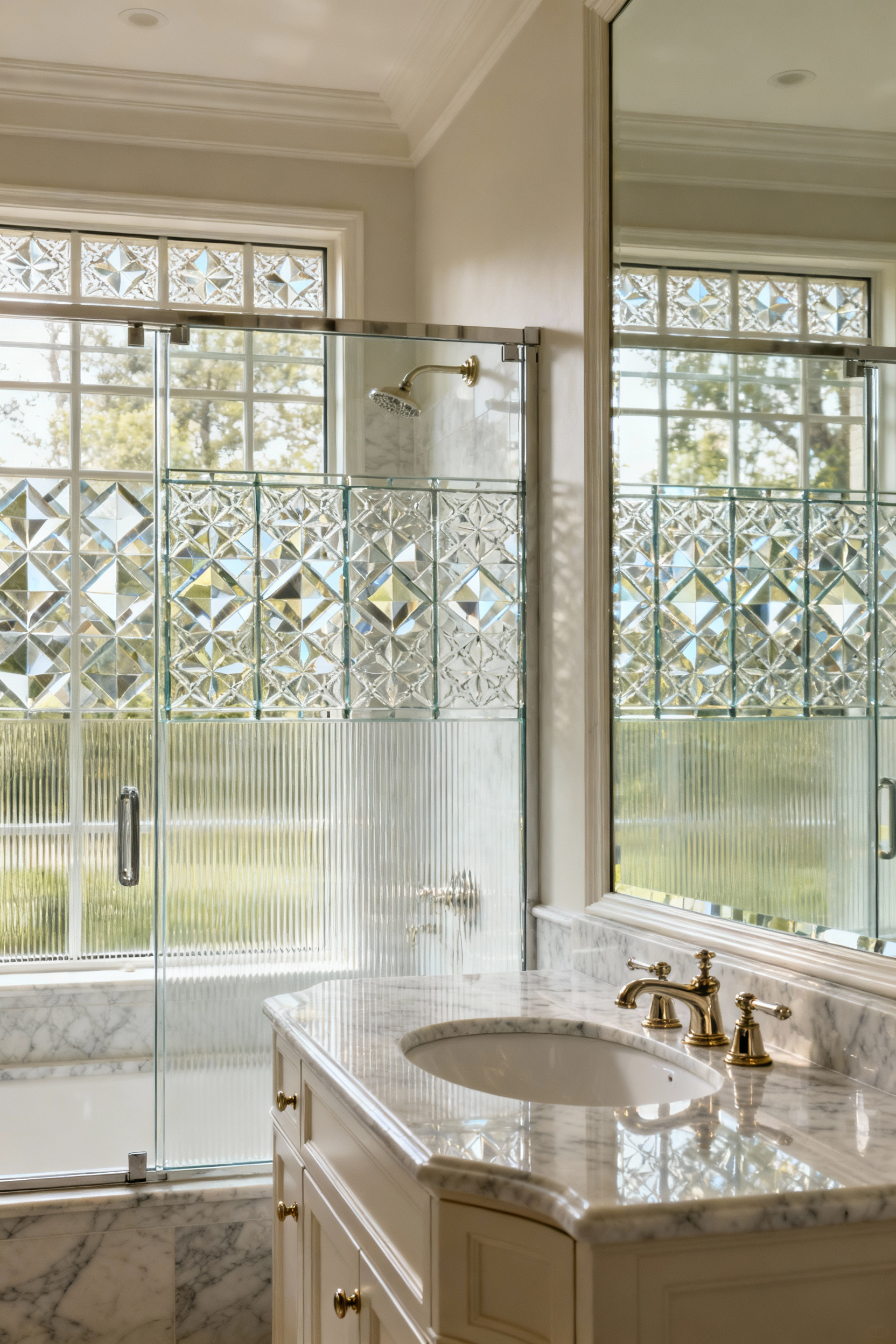
I love using reeded glass for shower enclosures or partition walls. It hides the water spots better than clear glass (a practical win) and adds a vertical rhythm to the room. It creates a sense of enclosure without blocking the light, making the shower feel like a private capsule within the room. It’s a texture that feels architectural rather than decorative.
The bathtub is the altar of the bathroom. If you have the space, pulling the tub away from the wall and giving it breathing room changes everything. It becomes a sculpture. Whether it’s a clawfoot for a Victorian vibe or a solid skirting for an Art Deco feel, a freestanding tub commands respect.
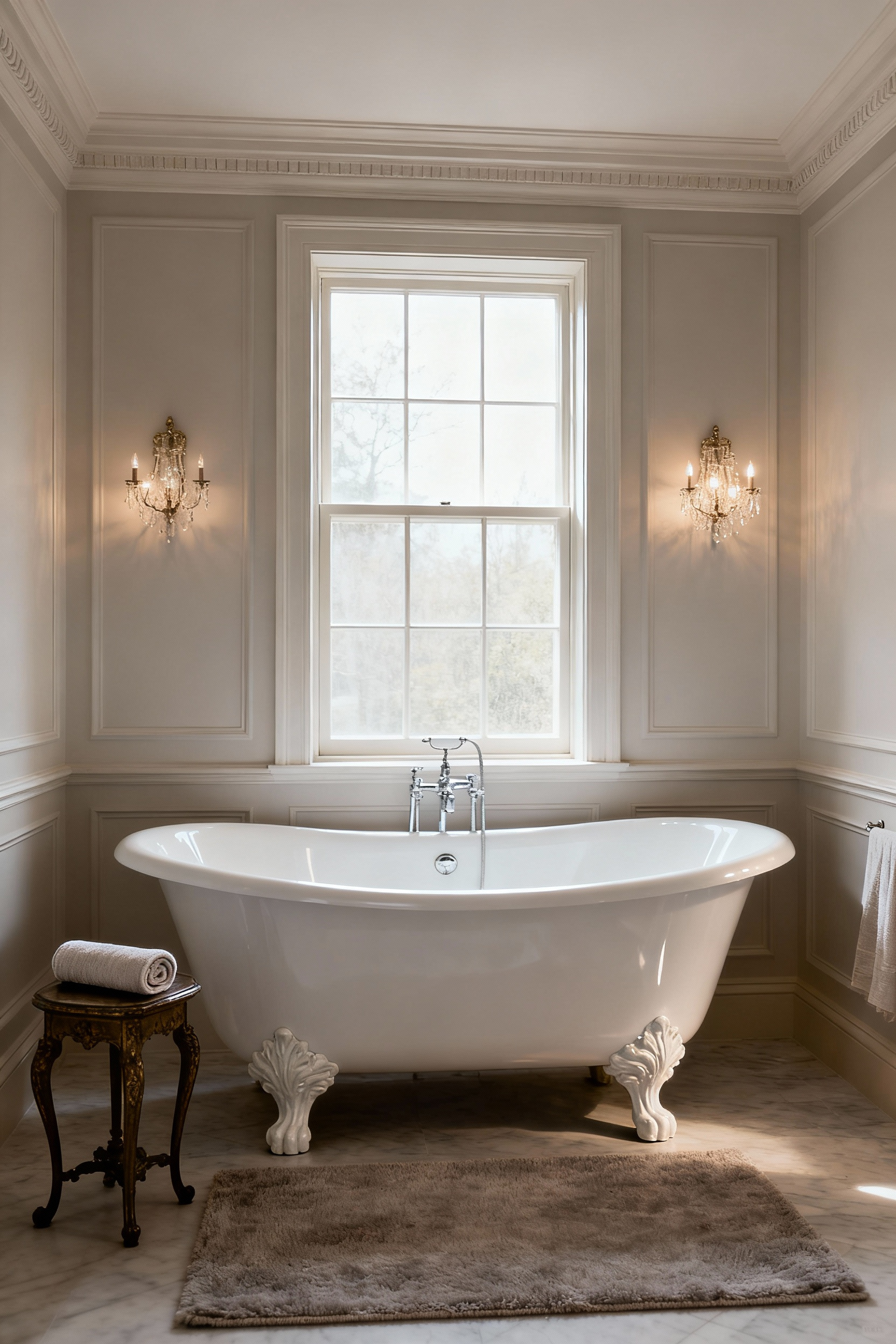
Practically, I know people worry about cleaning behind them. But visually, seeing the floor continue under the tub expands the perceived size of the room. It feels airier. Just make sure you position it so you have a view of something other than the toilet—ideally a window or a beautiful piece of art.
I’m going to be controversial here: vanity cabinets are often unnecessary bulk. If you can solve your storage needs elsewhere (like a linen closet), a pedestal sink or a console lavatory with metal legs is superior. It exposes the architecture. It shows off the tile wainscoting. It keeps the room feeling open.
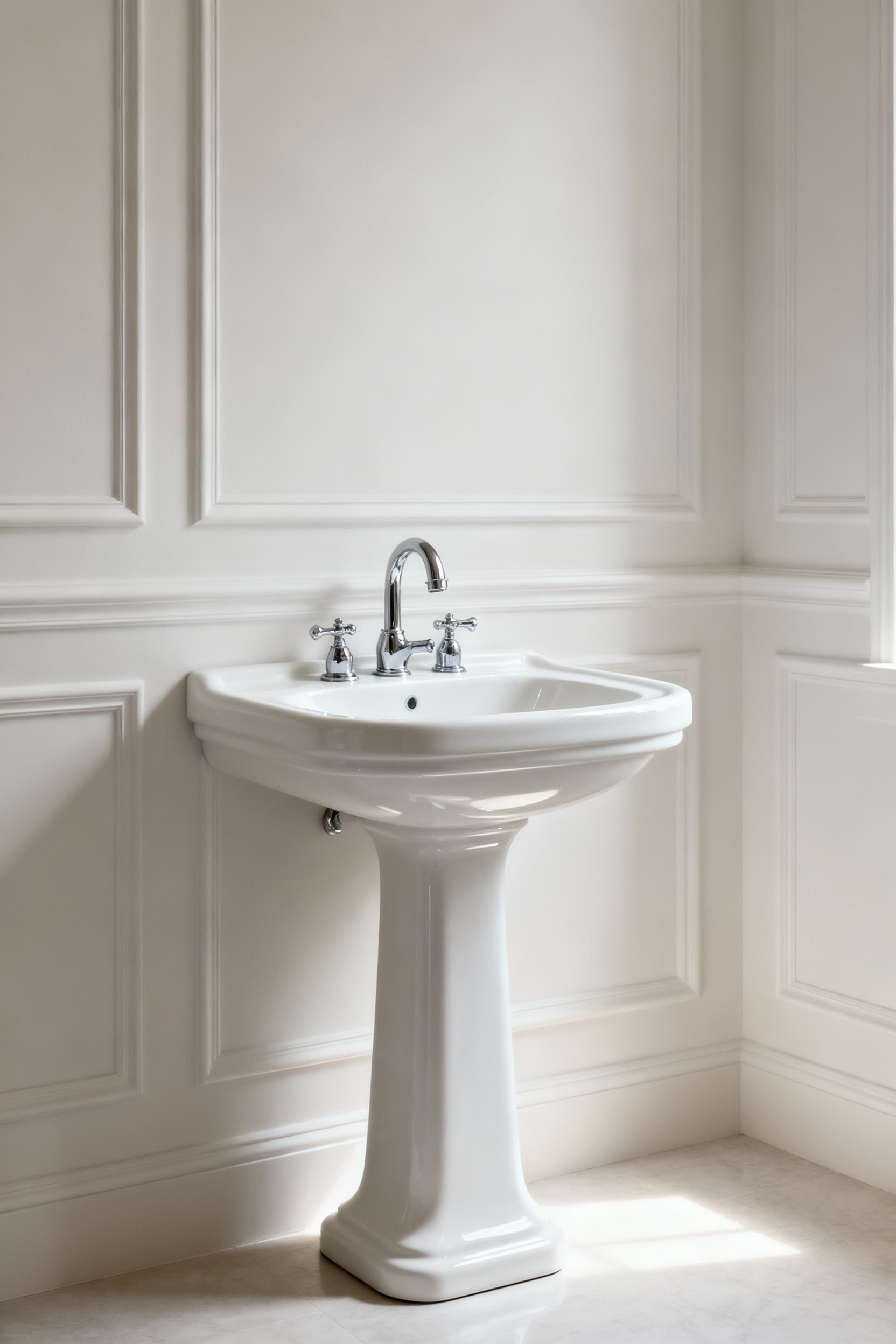
Years of professional experience taught me that clutter expands to fill the space available. When you give a client a massive vanity, they fill it with expired lotion and travel shampoos. When you give them a pedestal sink, they curate their essentials. It forces a cleaner, more disciplined lifestyle that actually looks and feels better.
Lighting can ruin a design faster than anything else. A single “boob light” in the center of the ceiling is a crime. You need layers. You need task lighting (sconces at face level so you don’t look like a tired raccoon in the mirror), ambient lighting (a softer overhead source), and accent lighting.

I always insist on dimmers. Always. A bathroom design classic needs to function for a 7 AM shave and a 9 PM soak. Those are two different lighting needs. I also love adding a small lamp on a counter or a dedicated spot light on a piece of art. It makes the bathroom feel like a living room, not an operating theater.
The mirror is the focal point above the vanity. Please, step away from the builder-grade sheet of glass glued to the wall. Treat the mirror like a portrait. Frame it. Or, if you need storage, recess a medicine cabinet into the wall so it sits flush.
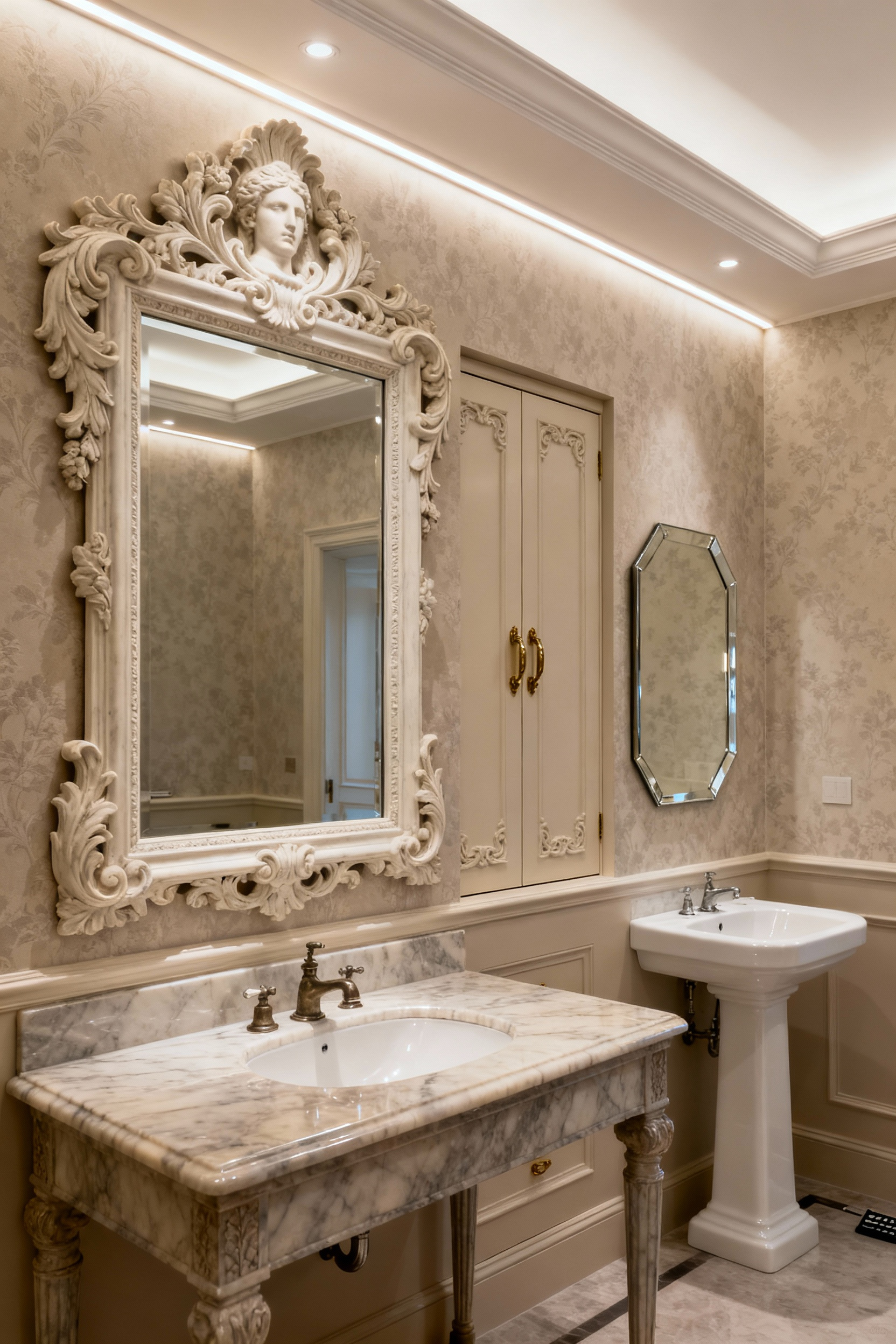
There are beautiful medicine cabinets now that look like framed mirrors but hold all your daily clutter. This is the ultimate “have your cake and eat it too” scenario. You get the clean, historical look of a hung mirror, but you don’t lose the functionality. It’s a small detail that keeps the counters clear, which is essential for that serene, classic feel.
Finally, we look at the touchpoints—the things you handle every day—and the atmosphere. This is where we move from construction to curation.
A bridge faucet (where the hot and cold mix in a visible bridge before the spout) is a quintessential period detail. It looks mechanical and elegant at the same time. Pair that with a thermostatic shower valve—where one handle controls volume and the other controls temperature.
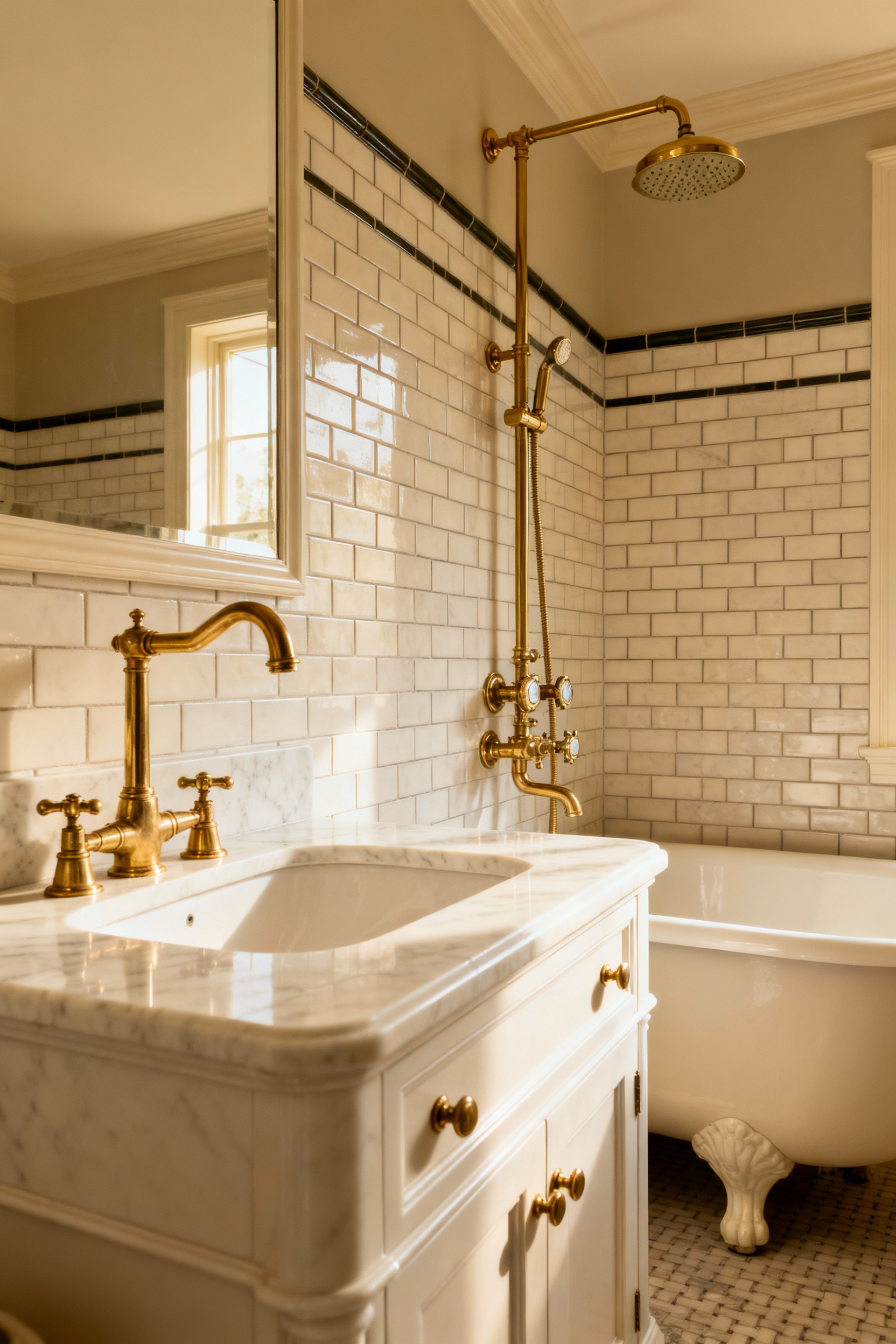
This isn’t just about looks. A thermostatic valve is a modern luxury that fits perfectly in a classic setting. You set your temperature once, and it stays there. No more freezing because someone flushed a toilet. It’s a hidden upgrade that makes the historical aesthetic livable for modern standards.
A bathroom shouldn’t look like it came entirely from a catalog. It needs a soul. I always try to bring in at least one antique. Maybe it’s a vintage milking stool next to the tub, an old oil painting, or a silver tray for perfumes.
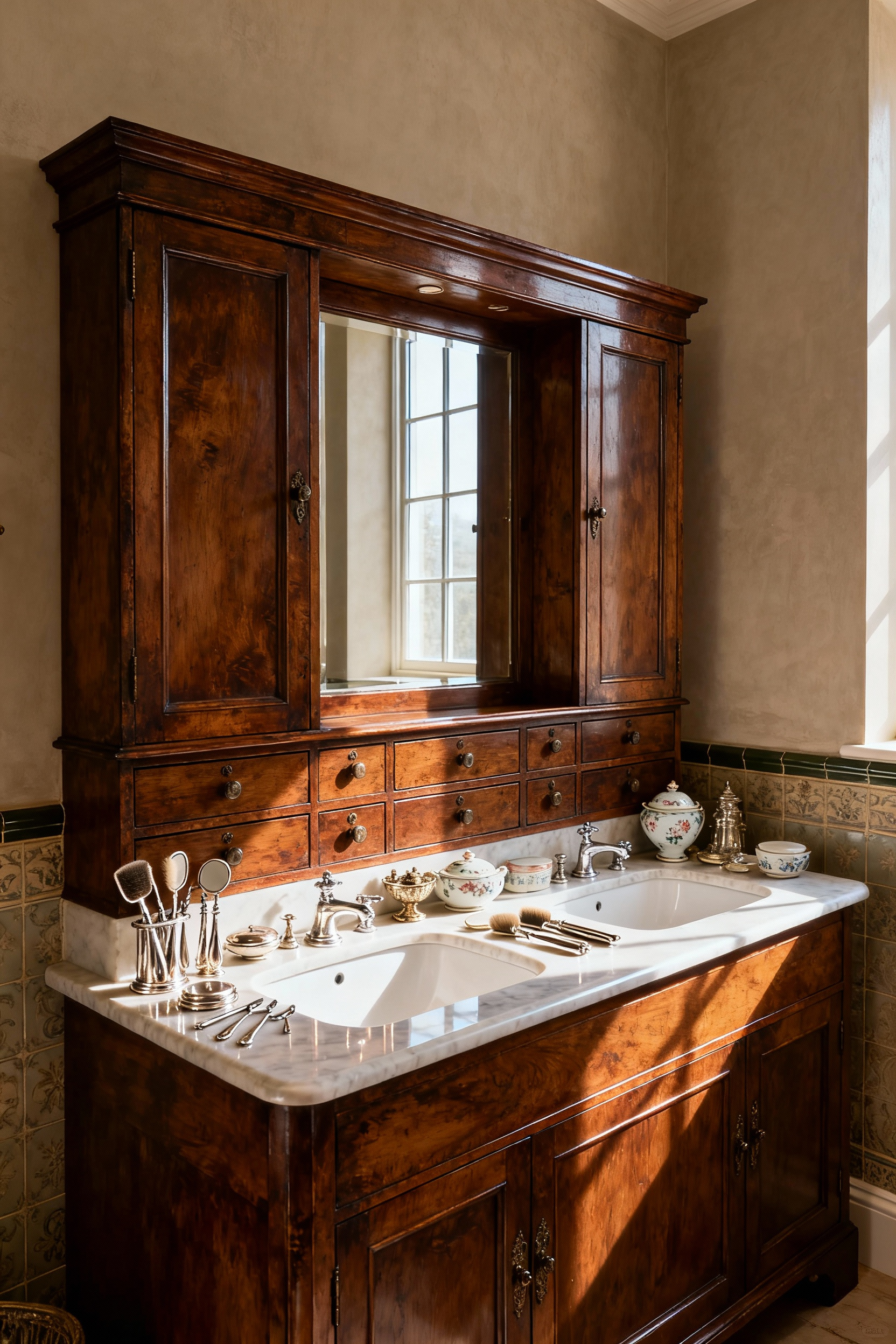
I learned this early in my career: contrast creates interest. A brand new, perfect porcelain tub looks even better next to a beat-up, rustic wooden stool. The juxtaposition of the slick and the rough makes the space feel grounded. It tells a story that you didn’t just buy a “bathroom package” from a showroom.
We want the classic look, but we want electric toothbrushes and hair dryers. The secret is hiding the tech. Put outlets inside the drawers or cabinets. Hide the trash can in a pull-out tilt bin.
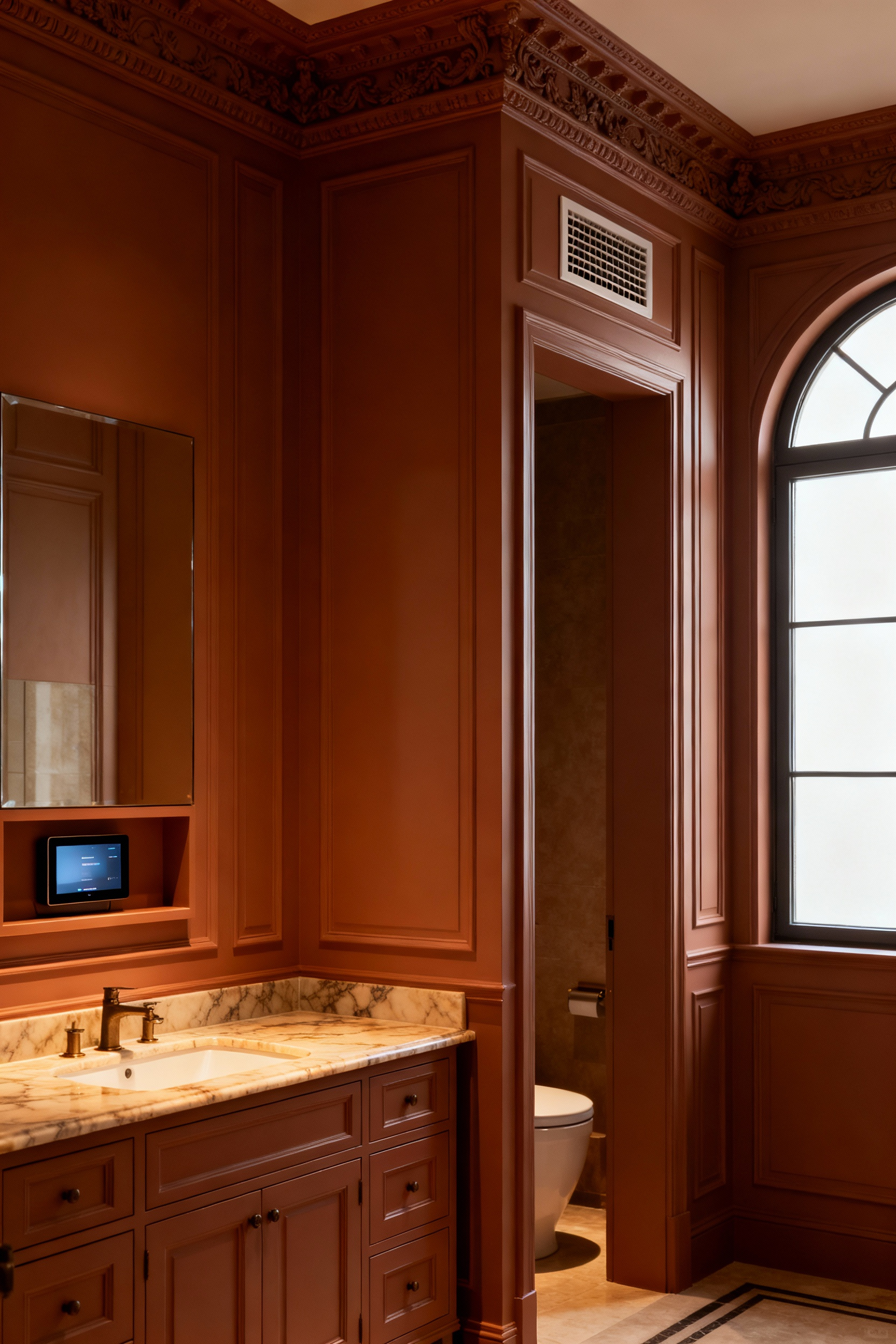
I’ve seen this work best when we plan the electrical plan around the cabinetry. We dock the gadgets inside the vanity so they are charged and ready, but invisible. We don’t want to see cords snaking across a marble counter. It breaks the illusion of the sanctuary.
You can build a Taj Mahal of a bathroom, but if the towels are scratchy, the experience is ruined. Texture matters. Waffle weave towels, thick cotton mats, a heavy linen shower curtain—these soft elements absorb sound and soften the hard surfaces of stone and tile.

Invest in white linens. They are classic for a reason—you can bleach them, they look crisp, and they feel like a hotel. Stack them on an open shelf or roll them in a basket. It’s a visual cue of comfort.
The smell of a room is the first thing you notice, even before you see the tile. Chemical air fresheners are forbidden. Use natural scents—eucalyptus branches in the shower steam, a lavender candle, or triple-milled soaps.
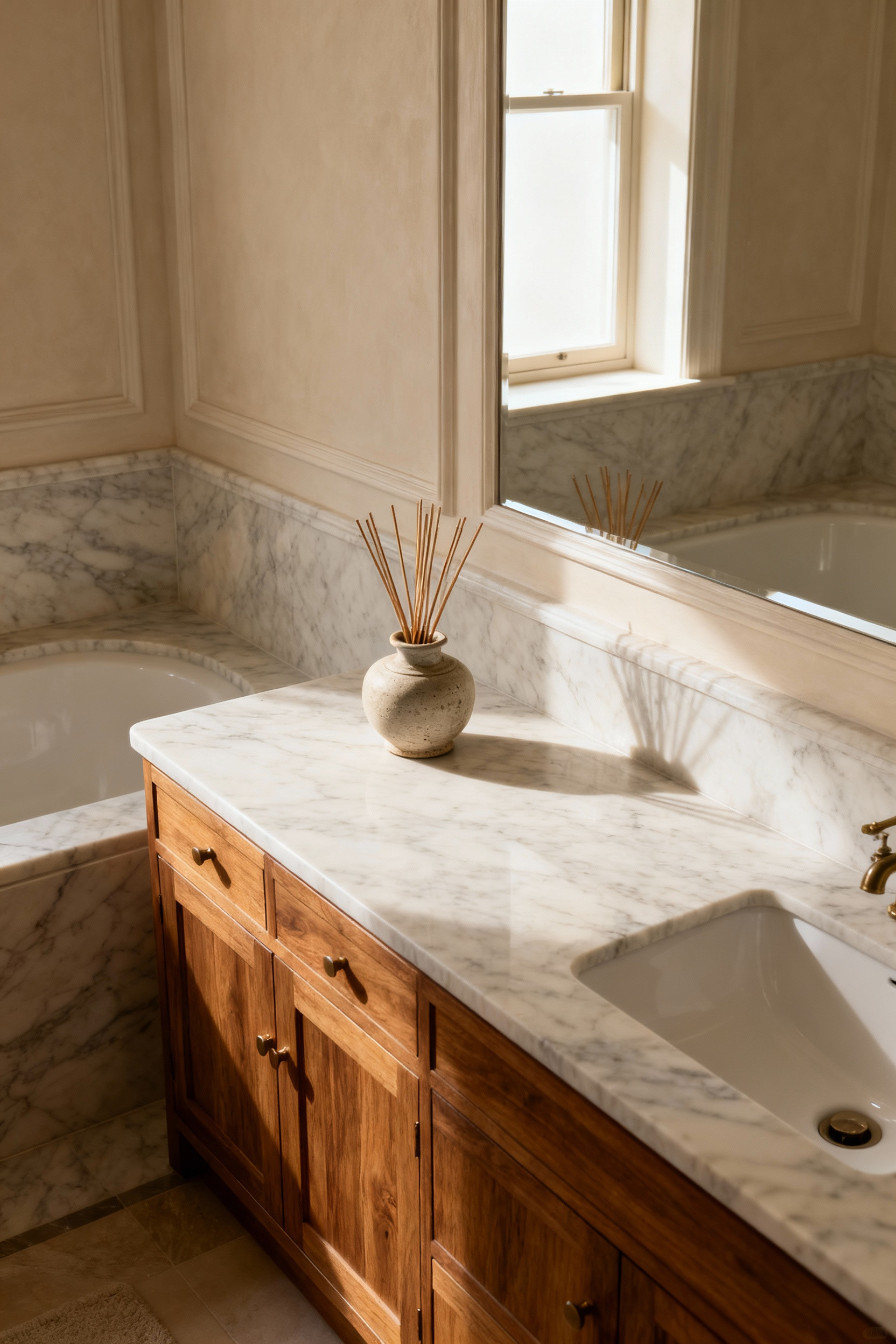
It seems small, but it triggers an emotional response. It shifts the brain from “utility mode” to “relaxation mode.” In my own home, I keep a small bundle of dried herbs near the radiator. It’s subtle, but it makes the space feel cared for.
The final principle isn’t about design; it’s about stewardship. You have to take care of these materials. You can’t use harsh acids on marble. You can’t use abrasive scrubbers on polished nickel.
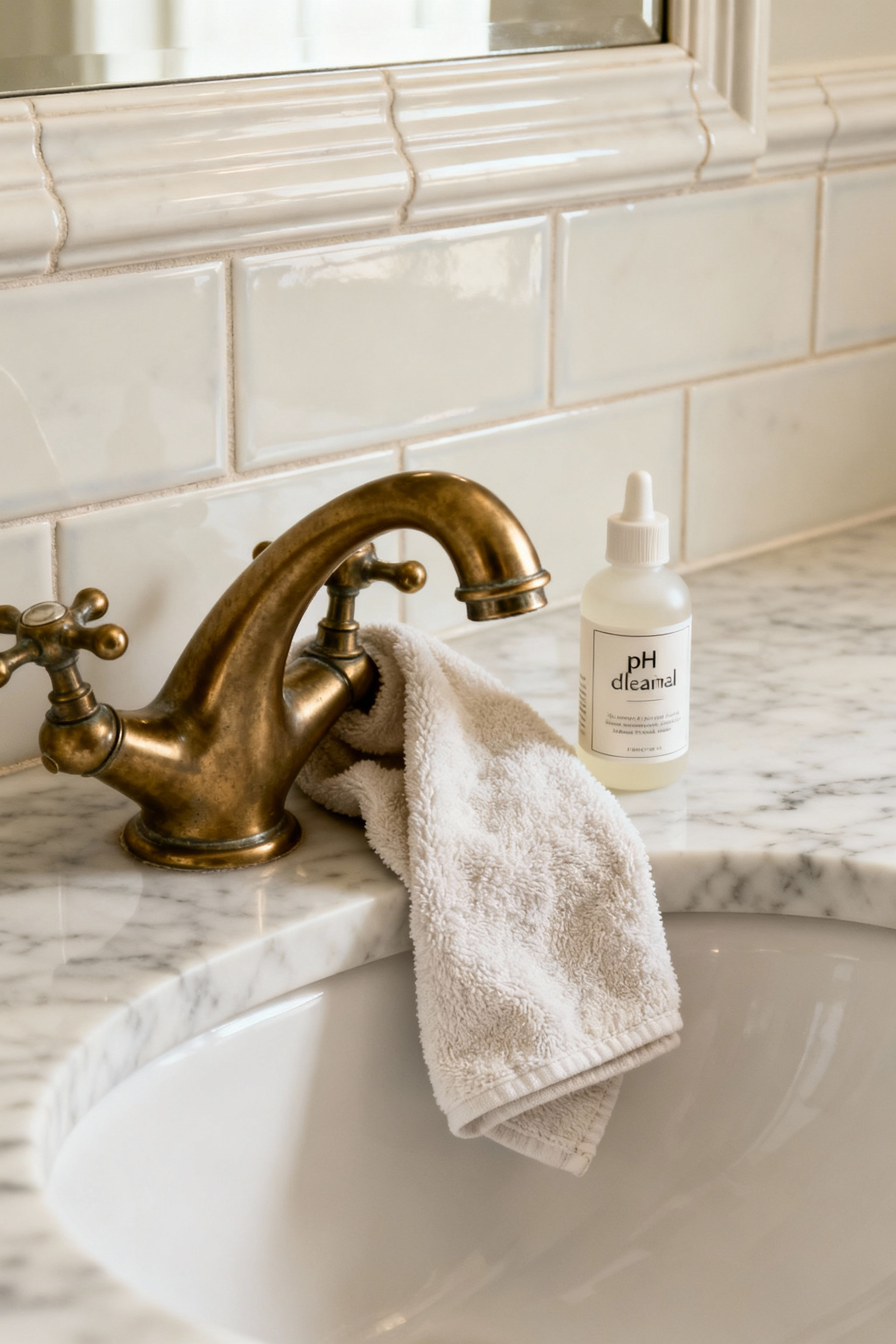
I tell my clients: you are the custodian of this renovation. If you treat the materials with respect, they will outlive you. It requires a shift in mindset from “cleaning” to “preserving.” Wipe down the shower glass. Seal the stone once a year. It’s the price of admission for having a truly beautiful, timeless space.
Creating a bathroom design classic isn’t about copying a photo from a magazine. It is an exercise in patience, education, and restraint. It is about choosing the floor that will look good in twenty years over the floor that looks cool on Instagram today. It is about understanding that true luxury is found in the weight of a brass handle, the cool touch of real marble, and the way light filters through old-fashioned glass.
Rachel Blackwood believes that when you strip away the noise of trends, you are left with the essentials: honest materials, good proportions, and quality craftsmanship. By following these principles, you aren’t just renovating a bathroom; you are restoring a sense of permanence to your home. You are building a sanctuary that stands firm against the turning tides of fashion, offering a quiet, dignified space for the rituals of daily life. That is the definition of heritage.